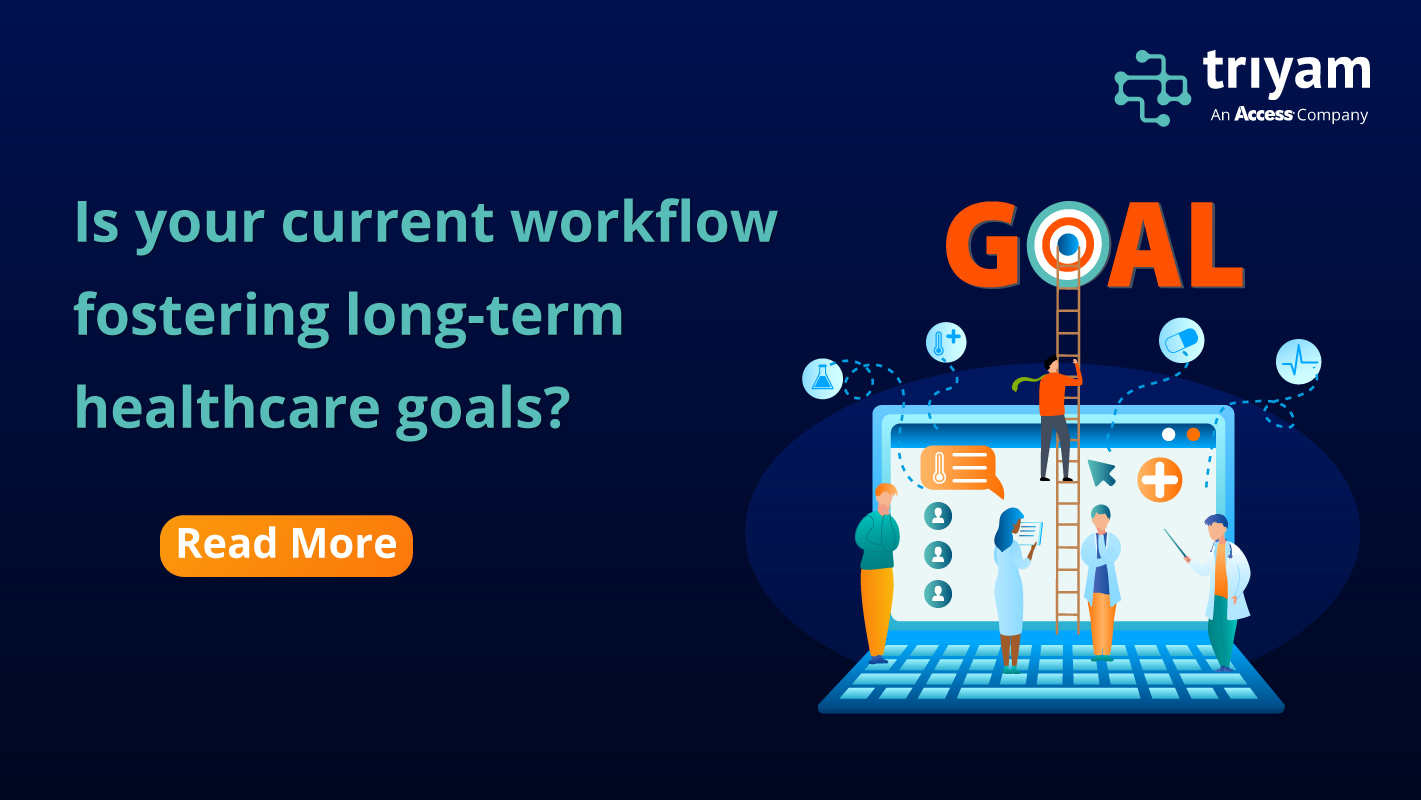It’s no surprise that healthcare leaders are increasingly adopting advanced health tech and cloud computing for data archival needs. The reason is achieving optimal workflow efficiency that directly influences organizational long-term goals. Let’s find out more!
How Cloud Streamlines Healthcare Workflow?
Cloud infrastructure facilitates real-time data access, automating tasks, improving collaboration, and enhancing accessibility, ultimately leading to patient-centric care. Here’s how:
1. Improved Collaboration
Cloud platforms facilitate real-time patient data access anytime and anywhere, enabling faster, informed decision-making, seamless communication, data sharing and better care coordination, supporting long-term care continuity.
2. Workflow Efficiency
Cloud solutions automate repetitive tasks like scheduling, claims processing, and data entry. Cloud-integrated systems reduce errors, optimize workflows and boost overall efficiency with optimized resource allocation.
3. Enhanced Security & Compliance
Cloud infrastructure is flexible and reliable with advanced data integrity measures (e.g., encryption, multi-factor authentication) and offer upgraded compliance features. Cloud reduces IT infrastructure and maintenance costs, allowing informed used of resources.

How Cloud Solutions Support Long-Term Healthcare Goals?
1. Scalability and Flexibility
HealthTech Magazine notes 60% of healthcare organizations report improved scalability and cost-efficiency through cloud adoption. Cloud scales resources based on demand, allowing for optimal performance even during emergencies within budget. This elasticity ensures effective management of increasing patient data volumes.
2. Enhanced Data Security
Innovative infrastructure comes with robust security features, such as end-to-end encryption, up-to-date compliance features and regular security audits, to protect sensitive patient information. This aids in sustainable long-term growth.
3. Improved Interoperability
Cloud-based systems promote seamless interoperability and smooth exchange of data across diverse healthcare systems. This enhances care coordination and value-based care, critical to long-term success.
Capitalizing on Cloud Solutions
1. Operational Excellence: Cloud-based analytics identify care inefficiencies and streamline operations at reduced costs.
2. Patient-Centric Care: Cloud solutions personalize treatment plans by analyzing patient histories, preferences, and real-time data, improving patient engagement.
3. Regulatory Compliance: Cloud-based platforms simplify the management of accurate and accessible records as well as compliance reporting and audits.
Role of C-Suite Healthcare Leaders
C-suite leaders are central to driving sustainable healthcare with long-term approaches. To leverage optimal use of advanced health tech, leaders should consider:
· Promote Digitalized Practices: Take the initiative to adopt cloud-based solutions and digital tools that enable faster communication, data access and overall efficiency across the organization.
· Invest in Workforce Development: Equip staff with the necessary skills and training to effectively use emerging technologies.
· Initiate a Culture of Innovation: Encourage a driven environment that thrives on evolving innovation for proactive predictions and decision-making.
· Strengthen Data Governance: Implement robust policies for data quality, security, and compliance to build trust among patients and stakeholders.
Adopting cloud-based data management solutions is coherent with sustainable growth. Allow innovation to accelerate healthcare workflow that directly supports long-term goals, streamlining financial, operational and administrative models. Additionally, it enables greater flexibility and scalability. Connect with Triyam to find out more!

